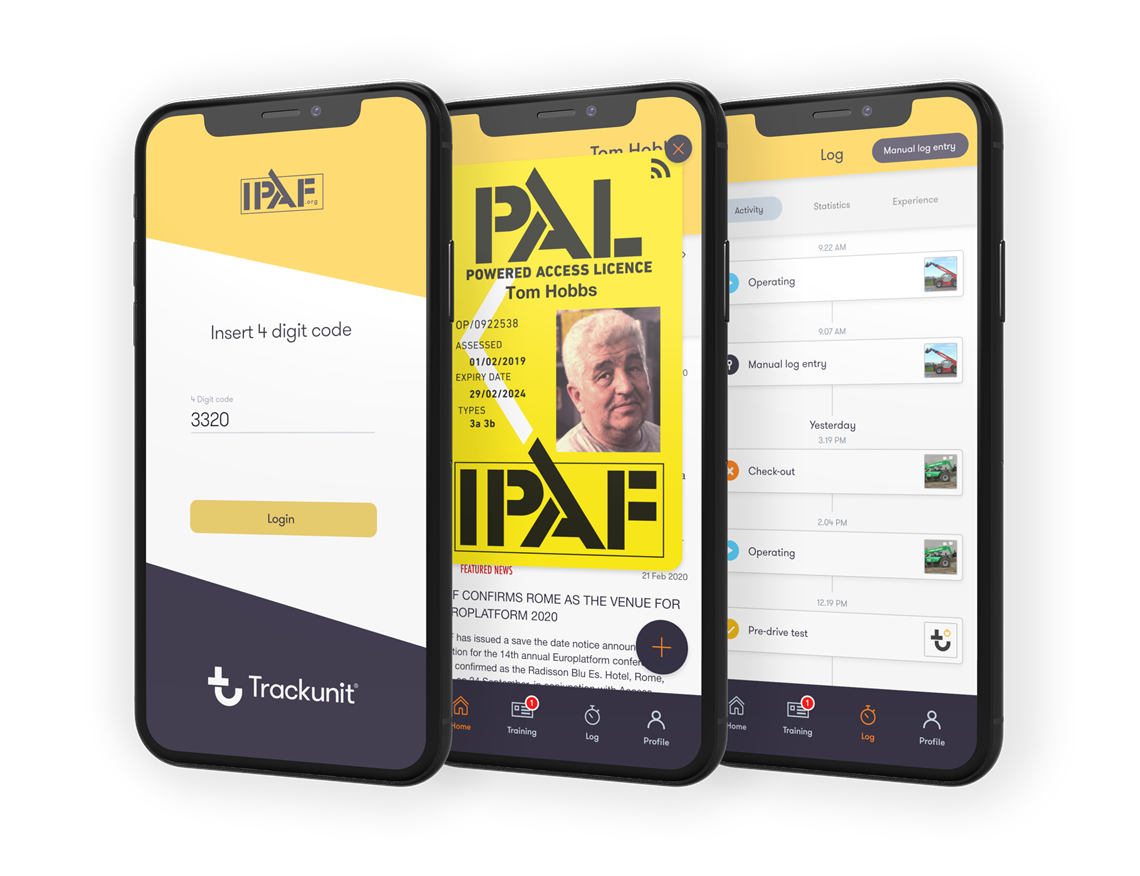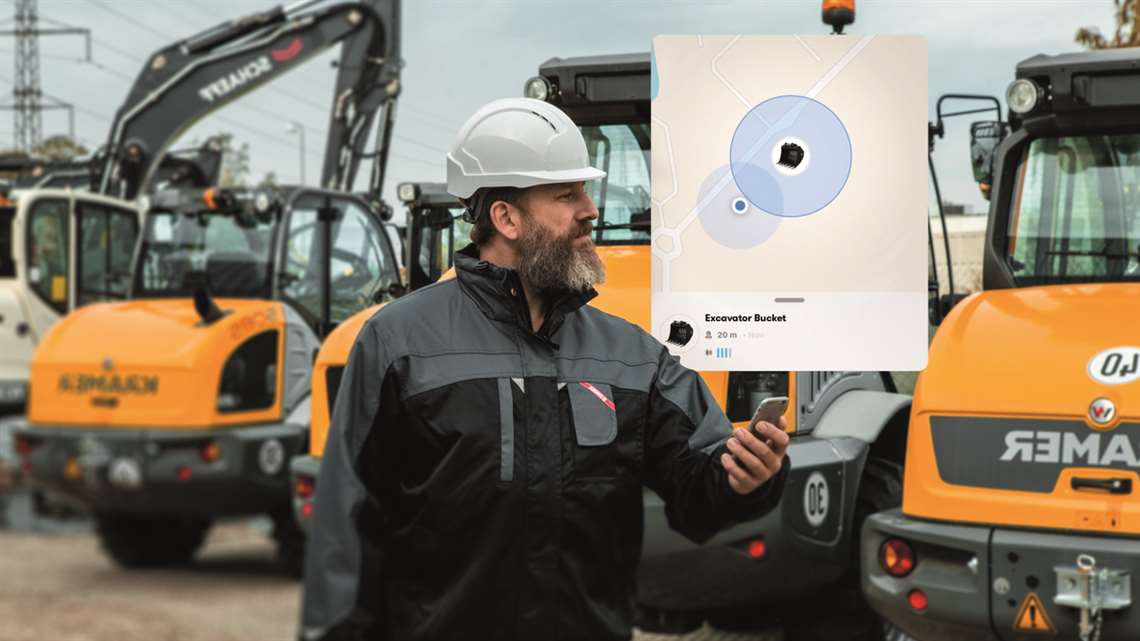Interview: Trackunit and the future of telematics
23 March 2021
Trackunit’s vision is set firmly in the future, with a unique range of offerings, all designed to ensure one thing – the elimination of downtime. Company CEO Soeren Brogaard explains all to Euan Youdale.
 Soeren Brogaard, CEO, Trackunit
Soeren Brogaard, CEO, Trackunit
With a five-year strategic plan that takes the company into realms that some would still consider to be science fiction, Soeren Brogaard, who was appointed as CEO of Trackunit last November, also has a clear focus on how to implement those initiatives.
Brogaard, having joined the company in 2016, took over the position from Joergen Raguse, a longstanding employee of 19 years, who has now become vice chairman of the board. As Brogaard explains, the handover was part of a longstanding succession plan as the company heads into its next five-year cycle.
While Trackunit’s compelling three-step plan moves through the existing potential of the internet of things (IoT) and expands into artificial intelligence, it has one mission at its core that shapes everything the company does – that being to eliminate downtime. “If you ask someone at Trackunit what their job is, they will tell you it is to eliminate downtime. That is the journey we have embarked on; that we invest in and focus on.”
And it will be ideally suited to MEWPs, adds Brogaard, “The aerial industry is the one that has probably embraced telematics the most in the last five years; some of that is driven by regulatory requirements [like in the UK] for sure, but you then see that ripple effect through other countries.”
Trackunit’s vision is being built through a range of initiatives, one of them being a digital version of the International Powered Access Federation’s (IPAF) PAL Card operator licence, named ePAL. And in recent weeks the company has launched the Kin, an asset tracking system for small tools and attachments.
Operator assistance
The co-development of the ePAL, by Trackunit and IPAF aims to ultimately replace the established credit card-style physical PAL Cards. Credentials will be delivered and stored on operators’ mobile devices in a secure digital wallet app, in much the same way that people store loyalty cards, boarding cards and tickets on their phones.
 The ePAL intiative follows a partnership with IPAF and Trackunit.
The ePAL intiative follows a partnership with IPAF and Trackunit.
“The work we are doing with IPAF is a good example of how we are coming together out of a need to eliminate downtime and create safe worksites.” And as Brogaard explains, the initiative hasn’t been created as a commercial product, rather out of a desire to create a standard in which an operator can be authenticated from a central system.
“We will have a centralised database that third party actors like Trackunit or an OEM, or anyone who wants to access this information, can use it to authenticate users on a machine.”
In addition, he adds, “We all have a login to get into our phones, so by default we have a higher level security, so it’s harder to get your card stolen if it’s on your phone than if it’s in your wallet.”
The plan is to introduce the e-PAL mid-this year in the UK, with it being rolled out more widely as stakeholders adopt it.
Accelerated data
With the effective expansion of telematics only really being possible through partnerships, Trackunit will expand this side of the business through partners like IPAF and others across the construction industry, “This includes global, mid-size and small rental companies and OEMs, coming together to eliminate downtime by using data in a smart way.”
One of Trackunit’s three steps in its evolutions of technology programme, is through the concept of accelerated learning loops, based on accumulated data and essentially amounts to artificial intelligence.
As Brogaard points out, as customers increasingly engage with their telematics systems, the richness of the data grows and, for example, can inform rental companies which machines should be chosen to put out to rent and which units need to be serviced first. “We are getting into an accelerated learning cycle where people, technology stacks and machines are contributing to faster learning.
“The neat thing about artificial intelligence and machine learning is, as you create the learning algorithms, they all contribute to an accelerated path of learning. Ultimately making what we do as companies smarter. Brogaard adds, “[This is an important area for us], to work with your partners to create these accelerated learning loops.”
This will lead to many future possibilities. For example, a fleet owner could be informed exactly when a battery will fail, through its pattern of use, combined with temperature and age of battery, etc. “So, you have an upcoming event that you can actively prevent. And you reduce downtime in every area.”
Asset tracking
The second major focus is the ‘bottom of the pyramid’, as Trackunit calls it. This refers to vital components and accessories that complement the use of a machine but cannot have their own telematics or tracking systems as the costs would be prohibitive. “We have a lot of accessories around the machines like the remote control or critical hand tools that get stolen or get lost,” says Brogaard.
 The bluetooth-enabled Kin tag for power tool asset tracking
The bluetooth-enabled Kin tag for power tool asset tracking
Enter the Kin, Trackunit’s new asset tracking system for small tools and attachments. It features a Bluetooth 5.2-enabled tag that can be quickly and solidly attached to any piece of construction equipment.
The tag connects to Trackunit’s Go App, available for mobile devices, making it instantly discoverable, within a range of up to 400m and a lithium battery life up to five years.
Once on the Trackunit system, any piece of tagged equipment, be it an attachment or a machine, can be instantly located, potentially saving operators time tracking it down. “Kin will benefit rental fleet managers and site staff by reducing both the loss of equipment through theft and the unnecessary downtime caused when equipment cannot be easily located.”
The Kin system will be initially available in Europe and North America, and Trackunit said there will also be a phased rollout of extra features, including an LED indicator to identify a specific piece of equipment sitting within a pool of assets and the ability to track the utilisation of attachments, with a correct ‘attachment to the machine’ pairing indicator.
Brogaard adds, “For the first time in the history of construction, Kin enables all onsite machines and equipment to be tagged and connected, tracked and managed using an easy-to-use application. It is a game-changing innovation, which also represents a major leap towards eliminating downtime in construction.
Mutual Benefits
The third piece in Trackunit’s current jigsaw, involves giving more power to the end user, whether they be contractors, civil engineers or the operator. The goal is contactless rental, to enable new business models in which, for example, you rent by the hour, and data becomes the driving vehicle behind that.
Moving on to the subject of ownership of data and data sharing, Brogaard confirms that the debate continues, but stakeholders are forming agreements that benefit each other. Ultimately, Brogaard says, “The Data is owned by whoever owns the machine.”
But arrangements around data are formed depending on the situation and the user. For example, if someone leases their equipment they will often have a data sharing agreement with the leasing company.
“Many OEMs now install their own telematics devices, and we see data sharing agreements where OEMs are allowed to see essential machine performance data.”
That would not include GPS, usage data, rental data and any data related to processes that are carried out with that machine, but information about hydraulic systems, engine performance, or the dozens of other potential data points relevant to aerial machine performance is fair game.
“Everyone I have talked to is very comfortable with the OEMs seeing that. It’s not usually real time; it gets uploaded once a day or once a week but is very useful for OEMS.”
Brogaard adds, “The systems we have today have evolved to be able to manage that quite carefully and separate data out so that everyone can enjoy the value of data without having challenging competitive situations in which you are seeing data that you shouldn’t see.”
One thing is for sure, cooperation between all industry stakeholders to increase richness of data is not just an ideal, it’s a must to create the next steps in connectivity, and as Brogaard puts it, “the elimination of downtime.” AI





